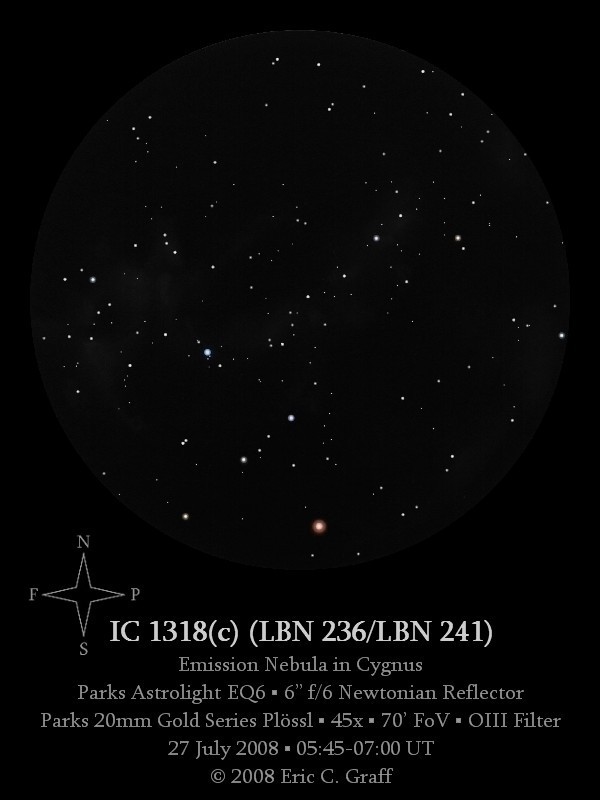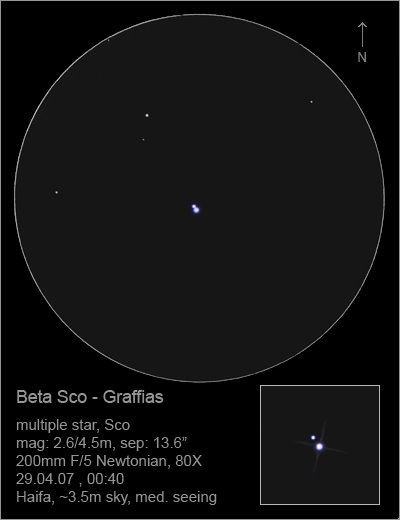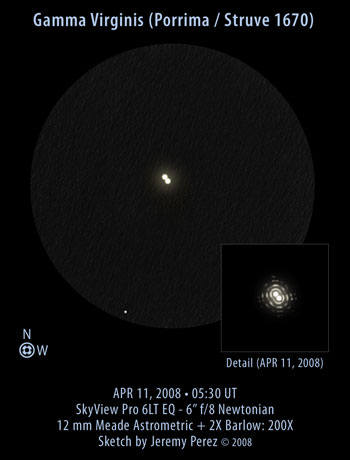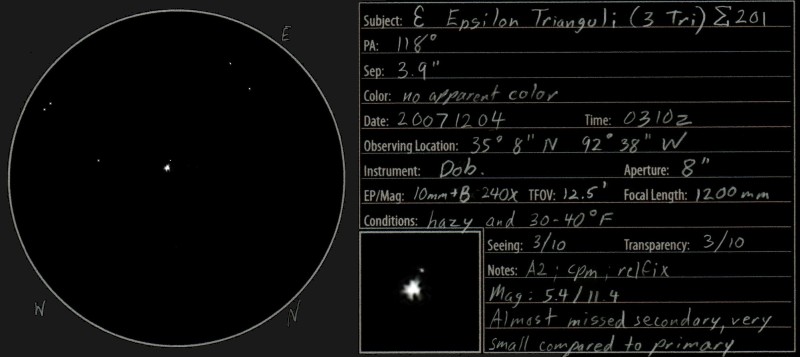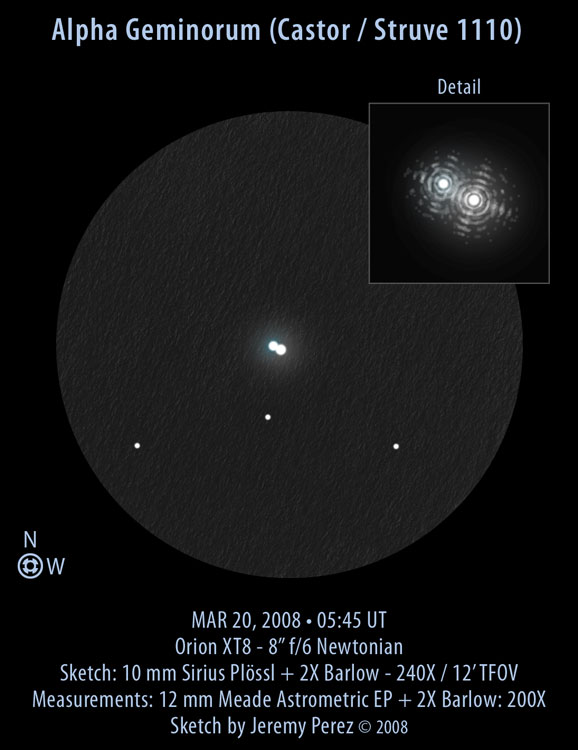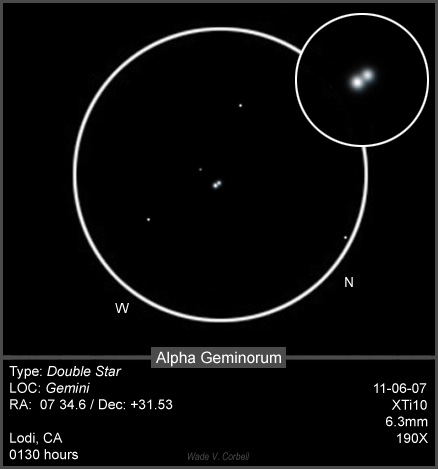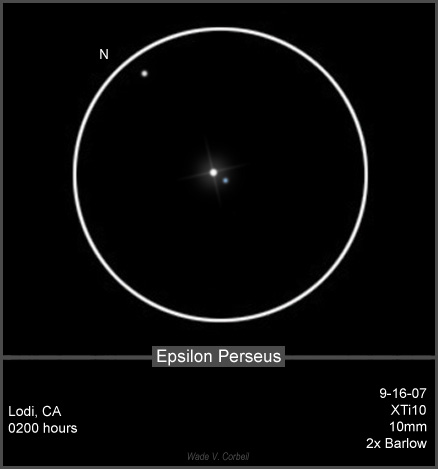IC 1318(c)
Sketch and Details by Eric Graff
Object Name: IC 1318(c) (West Extension)
Also Known As: LBN 236, LBN 240, LBN 241, DWB 52, GAL 077.7+03.4
Object Type: Emission Nebula
Constellation: Cygnus
Right Ascension (2000.0): 20h 17.1m
Declination (2000.0): +40° 50′
Magnitude: —
Size: 40′ x 25′
Date/Time: 27 July 2008 • 05:45 to 07:00 UT
Location: Oakzanita Springs, San Diego Co., California, USA
Telescope: Parks Astrolight EQ6 • 6″ f/6 Newtonian Reflector
Eyepiece/Magnification: Parks 20mm Gold Series Plössl • 45x • 70′ FoV
Filters: Lumicon OIII
Conditions: Clear, Calm, 64°F
Seeing: Pickering 6-7
Transparency: NELM 6.4; TLM 14.2
This cascade of stars shrouded in smoky wisps of nebulosity caught my attention as I made the star hop from Gamma Cygni to IC 1318(b). The cascade ends at the sparse open cluster Collinder 419, whose brightest star is a close pair known as Struve 2666 (6.0, 8.2; 2.6″; 245°). Just northeast of this cluster the narrow stream of nebulosity blossoms into a hazy morass of delicate nebulosity – this is IC 1318(c). Fifth magnitude HD 193092 blazes with a reddish-orange light to the south.
Sketch Info: Nebulosity sketched with graphite applied with artist chamois and blending stump on 24# paper in 7½” circle. Stars with pencil and ink, cleaned up digitally (and colorized) in Microsoft Picture It!

